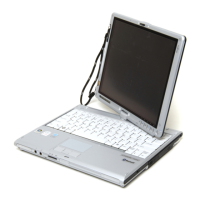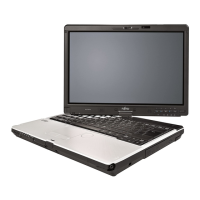Appendix
Windows® 10 Procedures
It is very important that you create y our Recovery Drive before beginning to use your system.
It is also important that you create a backup of the content of the C:\Drivers on you r
system to writable media or an external drive. System-specificsoftwaredriversare
also available for down load through the Fujitsu support site.
Note: Most of the information below comes from the Microsoft® page
"
http://windows.microsoft.com/en-us/windows-10/windows-10-recovery-options" .
Please refer to it for more details.
Creating a recovery dr
ive
A recovery drive can help yo u troubleshoot and fix problems with your PC, even if it
won’t start. To c reate one, all you need is a USB flash drive. Windows will inform you
ofthesizetheUSBflash drive needed to hold the req uired data.
1. From the taskbar, search for Create a recovery d rive and then select it. You may be
asked to enter an administrator password or confirm your selection.
2. W hen the tool open
s, make sure Backup system files to the recovery drive
is selected and th
en select Next.
3. Connect a USB drive to your PC, select it, and then select Next - Create. A large number of
files need to be copied to the recovery drive, so this could take some time.
4. W hen it’s don e, s
elect Finish.
Note:
If you chose not to back up the system files when you created your recovery drive on
Windows 10, you wo n’t be able to use it to reinstall Windows.
Recovery options in Windows 10
If your PC isn’t running as quickly or reliably as it used to, try o ne of these recovery
options. The following table can help you decide which one to use.
Problem Try this
You r PC isn’t working well and you recently
installed an app, driver, or update.
Restore from a system restore point
Your PC i
sn’t working well and it’s been a w hile
since yo
u installed anything new.
Reset yo
ur PC
You r PC won’t start and you’ve created a
recovery drive.
Useare
covery drive to reinstall W indows
You r PC won’t start and you haven’t created a
recovery drive.
Use installation media to reinstall W indow s
Restore from a system restore po int
This option takes your PC back to an earlier point in time, called a system restore point. Restore
points are generated when you install a new app, driver, or Windows update, and when you
create a restore point manually. Restoring won’t affect your personal files, but it will remove
apps, drivers, and updates installed after the restore point was mad e.
Fujitsu 129

